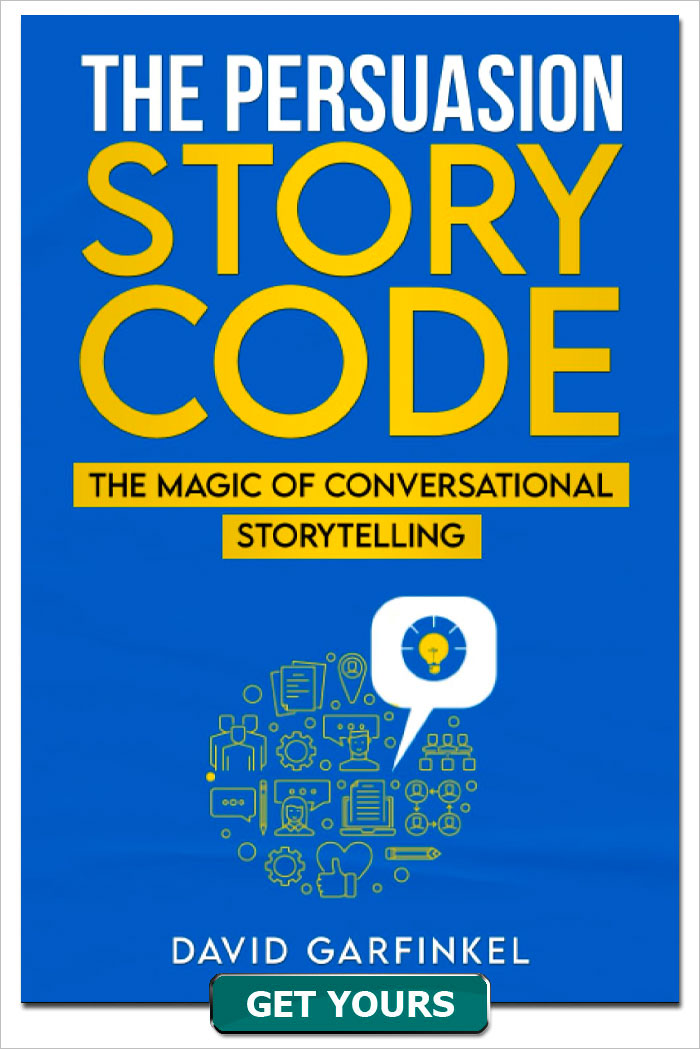Episode 007 - Copywriting Research
Published by: David Garfinkel on 06-05-2017
Tweet
Stephen Covey famously said "seek first to understand, then to be understood." Too bad most copywriters skim over this important part of selling.
For many copywriters, market research is just too difficult. For others, they just don't know where to start. In this episode, David covers those bases, and more.
Many years ago, a golf ball company was running a successful mail-order ad in a golfing magazine. The company owner decided to update the ad, and brought in a top designer from New York to redesign it.
To everyone’s horror, response to the ad dropped to zero. No one could figure out why. The copy had not been changed. The market was still hot and growing. There was no bad news about the golf ball company that anyone was aware of.
Turned out, the top designer had redone the coupon in the ad to be solid black, with white lettering and white blanks to fill in. This caused a problem for customers, because to fill out the coupon, they would have needed a pen that wrote in white ink!
The business owner ordered the coupon to be changed back to white, with black lettering. Once the ad published with the normal coupon, response shot right back up.
What’s important here is that the company could figure out what was wrong until they did hands-on research, step by step, to determine what the customer would have to do to order.
This episode is all about copywriting research, which makes a huge and measurable difference in the profitability of your advertising.
But first, my friendly reminder for you:
Copy is powerful. You’re responsible for how you use what you hear on this podcast. Most of the time, common sense is all you need. But if you make extreme claims… and/or if you’re writing copy for offers in highly regulated industries like health, finance, and business opportunity… you may want to get a legal review after you write and before you start using your copy. My larger clients do this all the time.
• How to research your customers: what they want, and what they need to read or hear in order to buy
1. Basic research – talk to them
o Don’t ask them about your product – ask them about their problems
o Ask questions like:
■ What’s the one problem with __ you’re having trouble finding a solution for
■ What happens or will happen when you don’t solve this problem?
■ Do you have an idea of what caused this problem?
o Conversationally, ask them what specific solution to a specific problem, that’s important to them, they would like… that they can’t find anywhere right now
o Or, if they can find a solution, ask them about what they don’t like, or they wish they had, that they don’t, in that solution
o Pay close attention to the words they use. The exact words. Don’t try to “help” them, or to correct them. Just listen and keep ’em talking. The way they talk about problems and solutions, the exact words they use, are very important in the crafting of your copy.
2. Read reviews. Especially on Amazon and social media. Pay less attention to what they gush about (positive) than what they complain about (negative)
o One review doesn’t make a trend. Multiple similar complaints do
o The same languaging for the same complaint in different locations (ie on Amazon, in a forum, in a blog post) is a sure sign that you’re onto something you can use in your copy.
o A reminder: You don’t just want to repeat their complaints. You want to also offer a unique, valuable solution that SOLVES their complaints!
3. If you have a product going and a customer service department, listen in on the customer service calls – make sure it’s legal – or, better yet, do a shift or two on customer service. You’ll learn tons.
o People never have a hesitancy to complain.
o Just listen at first. Don’t try to fix it right away.
o Sometimes, the REAL complaint is “below the surface.” That’s why you want to give people time to get to it. The REAL complaint is the one charged with emotion. Sometimes it will come out of nowhere. Cherish that information… it is gold.
o Example: Someone is talking about dry skin… then it gets to wrinkles… finally the REAL complaint comes out: “I just don’t want to look that OLD!”
• What to research about your competition – especially, how to determine what’s missing in their products, and what you can do better and/or differently to make them prefer you over your competition
1. The simplest thing you can do with the highest probability of success is find out what complaints are about WINNERS – and fix the biggest complaints in your offer – and trumpet it loudly.
o The first place to start is to look at successful competing ads from present day. Just look around; opt-in to lists of competitors; watch your Facebook account. You’ll start getting related ads remarkably quickly.
o The second place to look is successful ads in different fields from present day. Could be closely related or not related at all. What you’re looking for is an example of a complete package of words and … that’s plagiarism, and you wan to avoid that at all costs. More about that a little later on.
o Third place to look is old ads. There are a bunch of books like The Greatest Direct Mail Letters of All Time and They Laughed When I Sat Down: An Informal History of Advertising in Words and Pictures.
Also, there’s a website – swiped.co. It’s free, and it has copies of many old ads you can look at. Claude Hopkins, John Caples, etc. Has current ads too. Promo’s running right now. As best I can tell, it’s free.
2. Find out what appeal current winners leading with in their ads… especially ads that rank high (like on Clickbank) or appearing often (like Google AdWords, or Facebook ads).
o By now you should be familiar with the range of features and benefits of your product and related products.
o Simply find out which one(s) are being used in headlines and lead generation.
o That should give a starting point for your ad. Don’t copy word for word, but use the same idea in different words. Example: For a sleep aid, instead of “sleep soundly,” you could say “sleep all through the night.” It means the same thing, but the words are different, so you’re much safer.
3. Buy a competitor’s product and go through the entire sales cycle. Note what the upsells are. A successful product with successful upsells has zero’d in on, and nailed, the exact “mass desire” that will buy the most.
o Get a sense of the structure and the content
o Successful promotions usually have a theme. You’ll find the theme in the main product is repeated in the upsell. I heard a great example at a seminar, I think it was Nick Andrews who said it. If the main offer is Excedrin, the first upsell should be “extra strength Excedrin.” Look for patterns that you can adapt and duplicate.
o A good funnel with email follow-up is very valuable research. Learn all you can before you design yours.
• The secrets of profitably researching other ads that are winners in your field and other fields. Without plagiarizing, using what they are doing by adapting it to improve results with your own copy
1. Swiping – the difference between plagiarism and borrowing/adapting concept
o This is hard to teach and advanced concept – but, worth knowing about.
o The important thing to remember is there is a concept behind each successful ad… at least almost all of them. Also known as the Big Idea.
o It might be a metaphor… it might be a huge claim… it might be comparing a well known news situation or landmark, like global warming or the Eiffel Tower, to a specific situation your prospect is concerned about or wants. Global warming could be compared to toxic mold in a person’s home. You could make a case that there is gold buried under the Eiffel Tower.
(But you need to have some backup!) And then compare it to a business or investment opportunity.
o The key thing is not to use the same elements. Instead of global warming, you might talk about disappearing species of animals. Instead of the Eiffel Tower, you might use London Bridge. That steers you away from plagiarism.
2. Swiping – the difference between plagiarism and borrowing/adapting structure
o Same idea here
o The way to swipe structure is to identify the different elements in copy, map it out, and follow your map with different copy
o Headline – warning about threat
o Opening – expands on the threat
o Writer of letter introduces himself and talks about his relevant experience in regard to protecting yourself against this threat
o … and so on.
3. Notice how competing successful ads get into the customer’s head (conversation already going on in the prospect’s mind) and what they’re doing with their offer that is fresh and innovative.
o At the end of the day, this is what you’re looking for: The conversation going on in your customer’s mind
o It’s always very specific and down-to-earth
o More often than not, it’s about avoiding some specific pain or achieving some specific and probably elusive goal
o That, more than anything else, is what your research should help you figure out.
Keywords: research keywords market competition complaints insight









